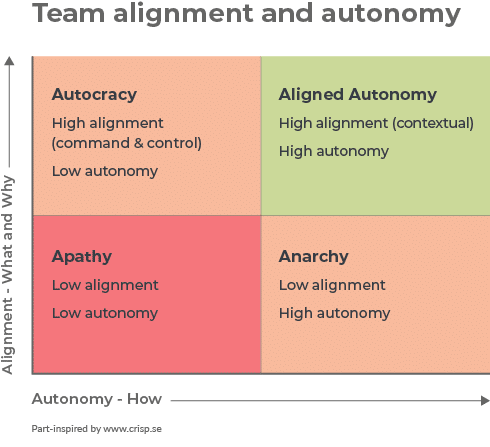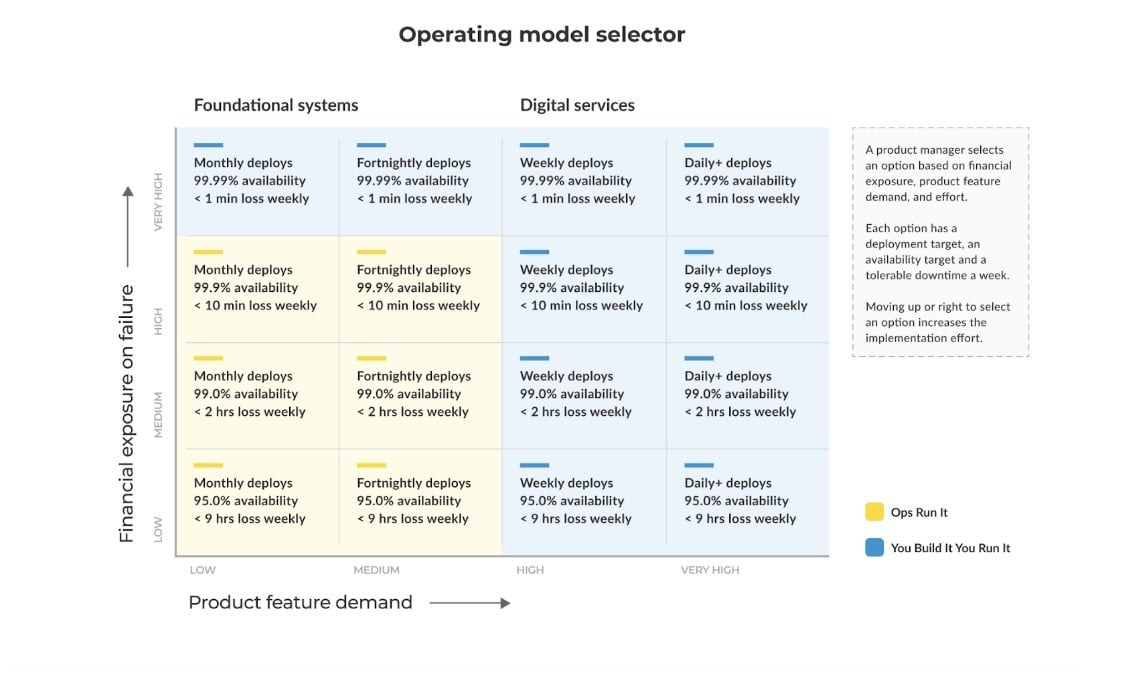Our Thinking Tue 8th November, 2022
4 ways to successfully scale agile delivery
I speak with customers and consultants across the Equal Experts network, to help our customers understand how to speed up innovation and reduce total cost of ownership at scale. Sometimes, our customers refer to this broadly as ‘scaling agile delivery’.
We’ve helped a lot of organizations to scale agile delivery successfully. Forrester Research recently published a Total Economic Impact (TEI) study that shows partnering with Equal Experts achieved a 123% ROI and 60% reduction in time to market for:
- A food franchise scaleup: 10 teams, 40 workloads
- A consulting organization: 10 teams, 100 workloads
- A high end retailer: 40 teams, 75 workloads
- A government department: 80 teams, 900 workloads
It’s hard to implement cross-functional, outcome-oriented teams delivering complementary product capabilities. The good news is success leads to a faster time to market, better quality, reduced risks, lower costs, and better user outcomes which improve your bottom line. My colleague Jon Ayre recently talked about how to iteratively scale agile. I’ll take that a step further. Here are four ways to scale up your delivery capabilities:
- Set teams up to have alignment with autonomy
- Introduce a You Build It You Run It operating model
- Focus on frictionless onboarding
- Create paved roads to allow teams to focus on delivering business value.
Create alignment with autonomy
Teams make faster and better decisions when they understand the intent, purpose, and constraints behind their work, and when they can act for themselves. Teams need to be aligned to deliver on strategy and execution, and autonomous to deliver outcomes without handoffs.
The problem is organizations often implement alignment as command and control. Teams are forced to treat alignment and autonomy as opposites, and they become stuck in one of two scenarios:
- Autocracy. Teams have high alignment but low autonomy. They incur delays because they can’t make decisions. At a media conglomerate, I saw 8 teams who constantly had to wait for 2 shared product managers to make all their decisions for them.
- Anarchy. Teams have high autonomy but low alignment. They’re unaware if they’re making good decisions or not. At an insurer, I saw 10 teams spending ~80% of their time on unplanned BAU work, because they’d implemented 10 different services with 10 different AWS runtimes.
The solution is to replace command and control with contextual alignment, and give teams the freedom to make good decisions in aligned autonomy. See why you need alignment with autonomy at scale.

Adopt You Build It You Run It
Teams achieve higher throughput, greater reliability, and a continuous learning culture when they build and run their own workloads. Teams need to become accountable for reliability as well as functionality, and focussed on outcomes rather than outputs.
The problem is organizational inertia towards using a central operations team to run differentiated digital services. It’s not possible to achieve a high throughput, high reliability baseline when delivery teams and an operations team are set up to work at cross-purposes. I’ve seen many organizations struggle to innovate because handoffs, competing priorities, and misaligned incentives occur every day.
The solution is to adopt the You Build It You Run It operating model for differentiated services, and keep your operations team for foundational systems. Make your product managers accountable for reliability, and put product teams on-call. See You Build It You Run It sounds great but it won’t work here and the You Build It You Run It playbook.

Focus on frictionless team onboarding
Teams are more effective when new engineers can make meaningful contributions as soon as they join up. Teams need a friction-free onboarding process that allows people to join a team and be productive on day one.
The problem is organizations usually treat onboarding as an afterthought. The onboarding process is disjointed and time-consuming, because it lacks a clear owner and is split between multiple organizational functions. I’ve seen engineers on a new team wait for weeks to commit their first line of code, because they’re waiting for the necessary permissions.
The solution is to automate onboarding tasks and reserve team capacity for knowledge sharing, so new joiners are immediately productive. Replace gatekeeping with trust and verify, share business domain knowledge, and establish a Bring Your Own Devices (BYOD) policy. See seven onboarding tips to accelerate productivity.
Build paved roads
Teams can deliver many user outcomes at pace when a majority of technology challenges are solved for them ahead of time. Teams need tasks such as microservice creation and telemetry provisioning to be self-service, fully automated, and fault free.
The problem is centralized technology capabilities are rarely designed to be user-centric. Teams can’t accelerate because they depend on platform teams focussed on infrastructure standardization, rather than the needs of their consumers. I’ve seen teams wait for weeks for a microservice provisioning ticket to be actioned by a platform team.
The solution is for platform teams to partner with product teams to create bi-directional feedback loops, and deliver self-service paved roads formed around engineer user journeys. Create a positive engineering experience for teams, focus on solving business problems with minimal cognitive load, and prevent platform teams from becoming service desks. See the Digital Platform Playbook.
Find out more
If you’d like to know more about how to successfully scale for agile delivery, get in touch! We’d love to hear from you.



